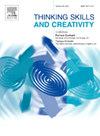Peeking at low versus high achievers’ problem-solving processes in interactive tasks with multiple items
IF 3.7
2区 教育学
Q1 Social Sciences
引用次数: 0
Abstract
Problem-solving is now emerging as a crucial thinking skill among students. To reflect students’ problem-solving levels, researchers designed a series of interactive tasks, especially tasks with multiple items. Researchers have examined the relationship between achievements and the use of exploration and navigation strategies in such contexts. However, the potential impact of analytical levels (macro versus micro) on problem-solving processes remains unexplored, constraining a comprehensive understanding of their processes. Especially, the difference in how the use of both exploration and navigation strategies evolve between low and high achievers at different analytical levels still needs to be uncovered. As such, our study analyzed log data (i.e., activities and related attributes) of 233 low achievers and 343 high achievers in a task consisting of six successive items at both macro (entire task) and micro (individual item) levels. We harnessed raw log data to generate meaningful insights into students’ problem-solving strategies at both the macro and micro levels, including initial goal-directed, initial non-targeted, and repeated exploration, as well as navigation behavior. The metrics of these behaviors, including behavioral frequencies and patterns, were then examined using independent t-tests and first-order Markov models. Results showed that metrics differentiating achievement levels varied by analytical levels. However, the frequency of initial goal-directed exploration and the pattern of continuous forward behavior appeared to be somewhat context-free, showing differences at both the macro and micro levels. Moreover, problem-solving processes in interactive tasks at the micro level may be linked to differences in item formats, complexity, and nuanced contexts. Our study provides deeper insights into problem-solving processes in more complex contexts, contributing to the development of more targeted tasks, more intelligent assessment and learning systems, and potential support for students’ problem-solving skills.
求助全文
约1分钟内获得全文
求助全文
来源期刊

Thinking Skills and Creativity
EDUCATION & EDUCATIONAL RESEARCH-
CiteScore
6.40
自引率
16.20%
发文量
172
审稿时长
76 days
期刊介绍:
Thinking Skills and Creativity is a new journal providing a peer-reviewed forum for communication and debate for the community of researchers interested in teaching for thinking and creativity. Papers may represent a variety of theoretical perspectives and methodological approaches and may relate to any age level in a diversity of settings: formal and informal, education and work-based.
 求助内容:
求助内容: 应助结果提醒方式:
应助结果提醒方式:


